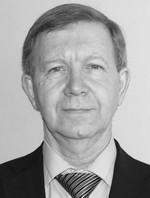Biotechnological approach in tumbling technique mastering process
Фотографии:
ˑ:
Fizicheskaya kultura: vospitanie, obrazovanie, trenirovka №3-2017, pp.23-25
Dr.Hab., Professor V.V. Antsyperov1
Dr.Biol., Associate Professor V.A. Likhodeeva1
PhD, Associate Professor Y.A. Ustkachkintsev2
PhD A.A. Vlasov3
A.M. Chizhikov3
1Volgograd State Academy of Physical Culture, Volgograd
2Southern Federal University, Rostov-on-Don
3Private educational institution, boarding school № 7, Volgograd
The study was designed to explore benefits of the tumbling techniques mastering process with application of a biological feedback (BFB) tools. It was found that a complex movement sequence learning process supported by the visual controls and error analyses helps improve precision of the athlete’s bodily sensations and quality of the mastered motor skill. The visually controlled BFB technology applied in the training process was found beneficial for the acrobatic motor skills mastering process, with the most significant improvements achieved in weeks 1 and 4 of the training process. By the end of the motor skill training period, the knee joint angle was tested to reach 170.4°.
On the whole, the study data and analysis demonstrated benefits of the visually controlled BFB technology as it helps improve the bodily control in every element of the biomechanical chain in the motor skill mastering process.
Keywords: tumbling techniques, biological feedback, training, exercise technique.
References
- Baranov V.M., Sentyabrev N.N., Solopov I.N. Osobennosti obucheniya napravlennoy relaksatsii s pomoshchyu bioupravleniya [Features of teaching directed relaxation using biofeedback]. Aviakosmicheskaya i ekologicheskaya meditsina, 2005, vol. 39, no. 1, pp. 24-27.
- Boloban V.N., Biryuk E.V. Pedagogicheskie aspekty razvitiya struktury dvizheniy sportsmena [Educational aspects of development of athlete's movements structure]. Kompleksnaya otsenka effektivnosti sportivnoy trenirovki, Kiev, 1978, p. 55.
- Gaverdovskiy Y.K. Obuchenie sportivnym uprazhneniyam. Biomekhanika. Metodologiya. Didaktika [Teaching sports exercise technique. Biomechanics. Methodology. Didactics]. Moscow: Fizkultura i sport publ., 2007, 912 p.
- Issurin I.B. Podgotovka sportsmenov XXI veka. Nauchnye osnovy i postroenie trenirovki [Training athletes of the XXI century. Scientific foundations and design of training process]. Transl. from Engl. I.V. Sharobayko. Moscow: Sport publ., 2016, 464 p. ISBN 978-5-906839-57-2.
- Sentyabrev N.N., Shamardin A.A. Povyshenie relaksatsionnykh vozmozhnostey sportsmenov s pomoshchyu bioupravleniya [Bio-management to increase athletes' relaxation capabilities]. Estestvennye nauki, 2004, no. 8, pp. 121-124.
- Aggelousis, N., Mavromatis, G., Gourgolis, V. et al. Modifications of neuromuscular activity in performance of a novel motor skill. Perceptual and Motor Skills, 2001, 93, рр. 239-248.
- Basmajian, D. Motor learning and control: A working hypothesis. Arch Physical Med Rehabilitation, 1977, 58, рр. 8-41.
- Blumenstein, B. Biofeedback applications in sport and exercise: Research Findings. In: Blumenstein, B., Bar-Eli, M., Tenenbaum, G., editors. Brain and Body in sport and Exercise. John Wiley & Sons, Ltd., 2002, pp. 36-54.



 Журнал "THEORY AND PRACTICE
Журнал "THEORY AND PRACTICE